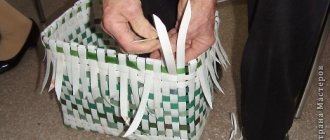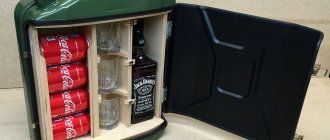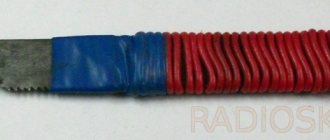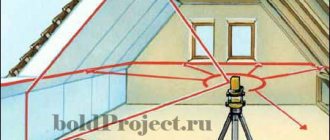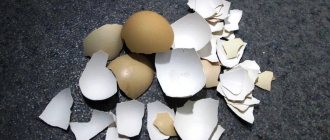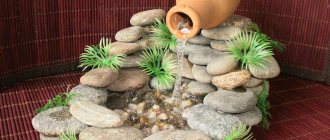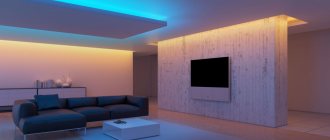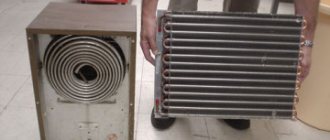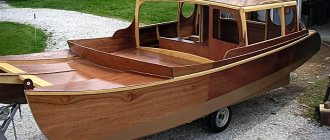- Growbox design and material
- Selecting reflective material
- Growbox lighting
- Growbox ventilation
- Growbox automation
A growbox is a closed structure that is designed to create an optimal microclimate for growing plants.
Its size may vary, depending on how many plantings the grower plans to place in it. Quite often, growers use ready-made furniture, for example, a wardrobe or a pantry, to create a grow box. There are a lot of options for what to make a growbox out of. In this article we will talk about how to make a growbox at home with your own hands from scratch. However, it also contains useful information for those who have already taken old furniture into account, wanting to breathe new life into it. So, now first things first. We present step-by-step instructions on “How to make a growbox with your own hands.”
Growbox: main characteristics of the equipment
A growbox or plant propagator is professional equipment that helps to grow seedlings and indoor flowers.
It also allows you to create a pleasant microclimate for plants and do everything to ensure that environmental conditions are favorable. It is great for many purposes. You can freely grow various fruit and vegetable crops in it. A growbox is an excellent replacement for many things, such as a winter garden, a country house or a greenhouse, because it takes up little space. It is located within the apartment and can help while away the long winter evenings.
Kinds
There is a conditional division of installations into three types. The first type is “standard”. Its dimensions are usually average and fit quite well in an ordinary apartment. This is either a cube measuring one meter by one meter, or a box more reminiscent of a mini-fridge with twice the height.
Such characteristics allow the owner of the equipment to maintain his plants without any problems, because there is enough space for free access when watering or pruning, for example. Don't go overboard with this option. We're talking about the number of bushes.
If you place too many of them in such a ready-made growbox , the branches will actively reach towards the artificial sun, becoming more and more elongated and thinner, trying to break through the shadow of their neighbors. In this you need to know when to stop.
When space is very limited, or your goal is not to display the device, but to disguise it in a furniture case, it makes sense to take a closer look at this type of installation, such as a grow compact.
In principle, there are no special differences from the first option, the only difference is in dimensions. This one is smaller, which means it can easily fit into even the smallest rooms in the house, or even in the office. Decorative flowers can easily fit in such a device.
Another, more advanced option is stealth. As a rule, it is even more compact, but at the same time very technologically advanced. After all, the most favorite technique for constructing a device is to take a used computer system case and place all the “stuffing” inside. But it is unlikely that it will be possible to place more than one “pet” in such a box.
This list can also include a structure such as a grow tent. Its advantage is that all this can be assembled and disassembled several times. After all, it consists of a frame, which is quite rigid, and durable fabric - an awning. In general, the modification is similar to a tent. To prevent excess light from leaking in, the outside flooring is black.
Inside, a reflective layer is applied to the fabric. All the necessary holes are already provided in it, so you don’t need to cut anything yourself (unless, of course, you bought a ready-made version). The door is one of the walls of the “tent”, which is locked. If you take a product measuring one meter by one meter, this will be enough to easily plant four plants there.
Classification
Today there is a whole classification of these devices:
- Standard. It is distinguished by its optimal dimensions. They are defined as 1000x1000x2000 mm. Such dimensions will help a young gardener to easily place a pair of mature photoperiodic plants that will not interfere with each other’s growth during their active flowering.
- Stealth. It is the most difficult and interesting type of grow box, hidden and unnoticeable. It has many advantages, such as noise and light insulation.
- Growcompact. It has small dimensions, which is why it fits in an ordinary room. This is a great option for those who need to grow small flowers.
Interesting! You can make a small grow box out of a refrigerator.
Growbox design
So, literally, “grow box” means “growing box.” We will build on this combination of words when creating the design of a future mini-greenhouse.
Dimensions (especially height) depend on the plants that are planned to be planted. For greens, radishes, and onions, a container with sides of 30 cm is sufficient. For root vegetables and flowers, you need a growbox up to half a meter high. If you want to grow tomatoes or cucumbers, you will need a growbox the size of a closet.
It is important that the green parts of the plants do not touch each other and in no case receive thermal burns from lighting fixtures.
Main components of grow boxes:
- Frame. This can be any suitable size box. From a computer system unit, a bedside table, a used refrigerator to a wardrobe, pantry or an entire room.
- Reflective surface. The inner walls of the box should be painted white or lined with a special material.
- Lighting. As a rule, special grow lamps are used.
- Fan. It is needed to ensure the outflow of heated air. Ventilation holes are also needed to allow oxygen to flow in.
- Climate control devices: thermometer, hygrometer.
- Associated equipment: time relay, heater, humidifier, filter - as necessary.
How to assemble equipment with your own hands: ready-made manufacturing schemes
There are many offers on the market. However, today you can create a growbox yourself. The main task is to provide acceptable conditions for growing plants. When designing begins, you can apply expert advice or go your own way.
To make this equipment you will need things and tools in the form of:
- Cabinet, box or chipboard box;
- Films with foil or other material;
- Thermometer and hygrometer for measuring temperature and humidity;
- Diode phytolamp, lamp or other lighting device;
- Pots, boxes, containers where plants will be kept.
Next we move on to the creation process. How to make a growbox with your own hands:
- Project . We prepare a drawing of the grow box, a diagram or a color project on the computer with how it will look;
- Purchasing all material and storing it in one place.
- Formation of a grow box . Schemes for construction can be found ready-made on the Internet. For example, you can use this:
Growbox or grow tent – what to choose?
You can make both of these yourself. In fact, an awning (tent) differs from a box only in its lightweight and easily disassembled design.
Grow tents are mainly offered ready-made with a convenient bag for transportation and storage. Their frame is calculated, and the awnings already contain all the necessary technological holes and, if necessary, several zippered doors for easy maintenance of the bushes. At the same time, the noise from operating equipment is heard much better due to the thin walls. And fitting a grow tent into the interior of a room is not always an easy task.
Or a homemade growbox that can be disguised as any piece of furniture - a refrigerator, a freezer, an old wardrobe, a bedside table, or even a computer system unit for stealth growing. Especially if these same wasted items are converted into a growbox. The growbox can also be assembled from sheets of plywood or chipboard.
By designing a cannabis growbox with your own hands, you can not only accurately maintain the required dimensions, but also provide a lot of useful nuances that will make growing easier.
Lighting
Many people are mistaken in thinking that any lamps are suitable for lighting a grow room. To grow a certain plant, it requires certain lighting and temperature. The fact is that incandescent lamps, for example, emit additional heat and have a strong glow. This may destroy some flowers if exposed directly to the lamp.
Types of suitable lamps for growboxes:
- HPS lamps are sodium lamps that are required to provide additional illumination to plants or to illuminate streets;
- CFLs are considered small fluorescent lighting fixtures;
- ESL in translation means energy saving lamps;
- 4 Led are distinguished by special LED properties in order for enhanced plant growth to occur.
More about growing plants: how to make aeroponics equipment with your own hands.
How to grow Krasulla at home can be found in the following article.
Features of poinsettia care: .
How to make a growbox: step-by-step diagram
Having collected everything you need, you can begin installing the grow box. It is carried out according to the following scheme:
- Frame installation. The box is assembled and the door is installed.
- Interior decoration. The interior is painted with white matte paint: non-toxic at high temperatures. Another option is to cover it with penofol with reflective material. It is attached using double-sided tape or a construction stapler. Foil tape is glued along the joints.
- Installation of devices. Holes are drilled in the lower part around the perimeter for the flow of fresh air. Holes are made in the upper part for the lamp and fan. The bottom is covered with waterproof material. A lamp is mounted on the lid. Next, a fan, humidifier, hygrometer, thermometer and other devices provided for by the design are installed.
Automation will help simplify the care of your grow box. For round-the-clock control of humidity, air temperature and lighting, it is advisable to equip the box with an automatic timer. It will allow you to strictly adhere to the required climatic conditions.
Ventilation
There must be ventilation; there are no restrictions on choice. The main thing is that the chosen system helps renew the air inside it and get rid of the hot air emitted by the lamp. If you use the advice of agronomists, you can come to a common decision on temperature. For all plants it should be from +22 to +27 0 C.
You can create proper operation of ventilation and all equipment if you use things in the form of an electronic timer or relay. This is an optional equipment, but it makes life much easier. The timer turns on and off for lighting along with the fan device in the box. During the development or growing season, you need to know that at this time all flowers need to be given light for up to eighteen hours during the day and six hours at night. When it becomes an adult and begins to flower, additional lighting can be set for twelve hours during the day and the same number of hours at night.
Humidifier. Is it worth it?
Some growers purchase an additional humidifier for their grow rooms. It is possible to make an air humidifier yourself. To do this, you will need a fan (an old PC cooler will do), a container of water and a hole with a stretched mesh or gauze.
- On the lid of the container, cut two holes for the cooler and the mesh.
- Install the parts in them and connect the fan to the power source. Important! The fan must be tightly inserted.
- Fill the bottom of the container with no more than half of the water. Water must not get into the fan.
- Connect the fan to a power source. To do this, you will have to look for a special adapter depending on the power consumption. Energy consumption, as a rule, does not exceed 6 watts.
Temperature compliance
What temperature should the grow box be? Everyone loves stability, including plants. Make sure that the temperature set for their growth always remains the same. Remember that lamps heat the air very much. In addition, they can burn the leaves and then they will dry out faster. Use blowing fans and carbon filters.
If you need to lower the temperature by 1-2C, use a humidifier, but do not get carried away with it, since humidity cannot exceed 65-70% at the vegetative stage and 55-60% at flowering. If the problem is low temperature, install heaters.
Growbox from a closet - a universal model
The popularity of a grow box made from a closet or an old chest of drawers is due to the fact that this furniture has the optimal size for growing not just one crop, but several necessary plants at once.
To create a mini-greenhouse from a closet you will need a minimum number of tools:
- putty, knife, mallet, hammer, stapler, tape measure, marker, scissors;
- sandpaper, PVA and drill.
- Such a set is available in almost every home.
- To create the greenhouse itself you will need:
- ESL lamps, 2 fans (coolers),
- wires, switches, thermometer, plugs, cartridges,
- Fibreboard, white paint or foil.
Once all the tools are collected, you need to remove the extra shelves in the cabinet, leaving only room for growing and storage space for all electronics.
Sticks are attached to the bottom of the cabinet, and a layer of fiberboard with cut out circles for pots is placed on top of them. The cabinet area is covered with foil or white film (oracal). Then lamps and fans are attached to the sides, one for air outflow and the other for inflow
Making a growbox is not so difficult; it is important to connect the electronics correctly and equip the future greenhouse with a high-quality ventilation system
Watering and moistening
Watering should be moderate. It is necessary to select it according to the type of a certain flower. It needs to be done at least once a day. Automatic watering allows you to permanently eliminate the problem of drying out and waterlogging of substrates. It helps the young gardener get rid of the need to water all the time. The volume of the tank for automatic watering is calculated according to the type of greenhouse and the number of plants. You can roughly calculate using this simple formula: 30 liters per 1 sq. m. Remember that during the growing season less liquid is consumed than during the flowering process.
Growing and planting seeds
An important step in testing a grow box is cultivating seeds in it. It's time to fully test the unit! Germinating seeds is labor-intensive. There is a high probability that most of the seeds will die. To avoid such losses, it is recommended to prepare the seeds before planting in the ground.
There are various ways for growers to grow seeds by adding various additives, placing seeds near a heat source, and so on. In fact, it turns out that experiments do not give the results they should, and often make the situation worse.
The most common and reliable methods are growing seeds using the greenhouse effect. For this you will need gauze and a plastic container. Place moistened gauze in a container and place the seeds in it.
The method is certainly a bit old, but seed germination is guaranteed. Place the seeds at a distance from each other - do not let them touch. After laying, cover the seeds with one or two more layers of wet gauze. No need to drown the seeds! Place the seeds in a room with stable room temperature. Wait for the roots to sprout.
Once the seed roots have grown half a centimeter, the seeds will be ready for planting in the ground. Now we need to prepare the ground. The life of the future plant depends on the correct planting. Before planting, dig a hole 1-1.5 centimeters in size.
Plant the seed with the root facing up and spray the hole with water from a spray bottle. Then bury the seed and sprinkle with water again. Just don't add too much water.
Growbox diagram, creating a box at home.
Growbox is one of the convenient methods of growing a variety of crops at home. It is compact, practical and can be very small in size, allowing it to be placed securely. Also, the grow box is very simple, which allows you to assemble it yourself at home.
Characteristics of the growbox
A growbox, which means a growing box, is a special tank that is designed specifically for growing plants. Regardless of whether the growbox is turnkey or homemade, it contains lamps of different types and power for lighting, as well as ventilation systems. The inside walls of the grow box are usually coated or painted with reflective material, which allows light to spread throughout the grow box. This is very important because any plant needs to receive light in all areas, and this surface allows the light to spread in all directions, giving the plants what they need. As a rule, penofol or other similar material is suitable for self-assembly. Grow boxes can contain additional devices that will improve the quality of your harvest. What is needed to assemble a grow box? You need perseverance, good skills, as well as a drawing, depending on the type of grow box you have. Having purchased the necessary equipment and selected the case itself, which should be square in shape, you can safely begin assembly. Of course, the box can be equipped with a variety of equipment, but the most important materials are lamps, reflective coating and ventilation. Everything else is solely for better boxing performance.
Types of grow boxes
Of course, there are a huge variety of types of grow boxes. They can be made either small, from, say, a system unit, or large, for example, from an old cabinet. There are four types of growboxes, so before you start assembling your own growbox, decide on the type:
- The growbox is standard. It is a medium-sized box, the size of a bedside table or small closet, which can have two compartments - a technical one and a department with plants. This division is extremely practical and convenient.
- The box is compact. These are made from small boxes, for example, the same system unit. Designed for a small number of plants grown. It is very compact and does not take up much space, and also does not require much effort during assembly. An excellent option for beginners, both in terms of assembly and growing in general.
- Growroom, literally – a room for growing. A practical, commercial option, with large space allocated for growing crops.
- Stealth growbox. These are resorted to when the owner does not want to publicly highlight his hobby for personal reasons.
Let's take a closer look at how exactly to assemble such boxes. Since grow boxes are mostly DIY, all the advice and drawings you can find are based on the perseverance of the growers, rather than factory programs.
Types of grow boxes for DIY assembly. Drawings, advice, equipment.
Standard growbox. This model is the most common, and we will start with it. As a rule, the most comfortable dimensions for subsequent calculations are 1m*1m*2m. Of course, the growbox can be larger, you just need to take into account that it fits into the interior and does not take up much space. For the starter box, you can use an old nightstand or a closet, depending on the amount of crops you want to grow. As a rule, a fairly decent number of plants can be placed in such a growbox, which will allow you to grow a fairly large crop. When creating a box, also take into account that inside, in addition to plants, there will be equipment that will also require a certain space for more efficient cultivation.
The quality of a home-built grow room is that it makes smart use of space. You shouldn’t fill it to the brim with bushes in hopes of a rich harvest. This can lead to the fact that the plants begin to fight for light and thus, you will waste too many resources, or the crop will completely die due to the inexperience of the grower. Try to arrange the plants so that the light reaches all areas, they do not interfere with each other and at the same time receive all the elements necessary for growth.
A standard growbox is still inferior to larger ones, which can be made from an old refrigerator or a larger cabinet. If you are growing small plants that don't require a lot of tall growth, or you don't have many plants to fit in, then a standard grow box will be the perfect choice for you.
So, let's consider what is needed, what equipment is most often taken and how exactly to make a grow box with your own hands according to the drawings.
First of all, you need a box for the box. This could be, as already mentioned, a variety of items from your own home - an old system unit, bedside table, wardrobe, refrigerator, TV and much more. Of course, you can purchase a ready-made grow tent that will match the size of the type of box you choose. Do not forget about the reflective material, which must be completely applied to the inner walls of the box. The quality of your harvest will directly depend on this. As such, the layout of a grow box is very simple - box, reflective material, light, ventilation. Based on this equipment, you can assemble an ordinary growbox for yourself, without any frills, but nevertheless extremely practical.
It is imperative to equip the box with a ventilation system. Depending on the type of grow box being created, ventilation can be extremely simple or extremely complex, with additional technology and equipment. Its main task is to remove heated air outside the box, simultaneously renewing it and adding fresh air. This way your plants will be in an acceptable climate and will not start to die from too hot temperatures.
Take care of the lighting. In this case, lighting is perhaps the most important equipment when creating a grow box with your own hands. The lamps will provide the plants with the necessary amount of light, which will allow them to grow and bear fruit at any time of the year, regardless of the climate. As a rule, among growers, the most common models are HPS lamps. However, there are other, no less popular models, such as LED, DNaZ, DRIZ, DRI. For a more economical option for assembling the box, ESL lamps may be suitable. Remember! Under no circumstances should you open the box in outside light. Excess light has a detrimental effect on plants.
Important point! It would not be superfluous to install a timer (time relay) to your growbox. This will make your life much easier. Any plants need a break from sunbathing, and therefore it is necessary to introduce a “day” and “night” regime for them. The timer will allow you not to worry about missing such time, since it will automatically turn the lamps on and off. If you have plenty of free time, you can do without a time relay, but then you will need to constantly turn the lamps on and off at a certain moment.
It is also recommended to familiarize yourself with the various drawings. Some of them may be about grow boxes for three or more pots, some show electrical diagrams that are needed if you decide to make a more advanced box. But now, let's look at what exactly is inside the box and how to install it.
Functions and components of a growbox
So, having chosen a standard growbox, we will look at its contents as an example of what can be found in other types of boxes. Try to make the boxing elements yourself as much as possible. In this option, there is no need to clog the box with anything third-party. A standard box must have two compartments - technical and for plants. In the technical compartment there is a fan (take the Solar&Polau TD 250 model as an example), which is connected to a timer. It will begin its work at the same moment when the lamps start working. Important! The box should also have several coolers located so as to blow air over your plants. Coolers work constantly, since even at night time, airflow to the plants is necessary. There, a little higher, all the wiring is located, as well as the electrical components. The height is 1.35 meters; thirty centimeters can be allocated for equipment. The width of the compartment is 80 cm, the depth is 60.
Of course, you can do without a technical compartment, but it still has a number of advantages:
- The equipment significantly heats the air in the box, and this is exactly what needs to be avoided. Lamps will already cause you trouble in this regard, there is no need to aggravate the situation.
- All wires and third-party equipment are neatly stored in the compartment, which allows you to carefully work with lamps and plants without touching anything else.
- Practicality, beauty, and comfort. These three qualities are worth the effort to create a compartment.
Based on this drawing, we will mention a combination of Cooltube Simax, Philips DNAT 250 W. Remember to check the wattage of the bulbs as certain plants require a certain amount of light. Excess will be extremely inappropriate. Cooler – 12 cm Zalman. The growbox may also have auxiliary equipment, namely:
- Temperature hygrometer
- Light power meter
- Moisture meter
- Residual current device.
There is a lot of additional equipment for any grow box. However, if you are assembling it for the first time, make do with minimal costs - light, ventilation, coating, timer.
Let's look at the operation and assembly of compact grow boxes. These perform the same functions, but are designed for a very small number of grown plants, as well as taking up a small space in the house. When creating one, you need to be extremely careful - you need to calculate every centimeter. This box is no less practical, and also contains two compartments, but unlike other types, it does not restrict the growth of plants. Try to ensure that this box does not take up much space and is extremely convenient in terms of your interior. You need to choose the box wisely, since the box must be well insulated (regarding noise, light and vibration). Boxing must be effective - do not skimp on quality lighting and ventilation. In particular, ventilation, since due to its small size the box will heat up very quickly, therefore it should be cooled better and more efficiently than the standard. Do not forget about safety measures against short circuits, power outages and fires. The box must be neat and of high quality, then it will not take up much space, will be convenient and at the same time provide a rich harvest. The optimal size for this is 40*45*80 cm.
For boxes, you can use electronic ballasts, as this has a number of advantages:
- Electronic ballasts simplify the installation of HPS lamps, which are the most popular for growing.
- Stable power throughout the entire period of use.
- The lamps will work even if there are network failures or power surges.
- Significantly saves energy.
- Doesn't make any noise.
As for stealth boxes, the task ahead is not an easy one. In addition to the fact that the grower needs to calculate every centimeter of the allotted space, it is necessary to make sure that the box does not attract attention to itself and looks like ordinary furniture. These types of boxes are made when the owner simply does not want to highlight his hobby for other people. In this case, you should take care of sound insulation, as well as get hold of carbon filters, since some plants may have an unpleasant odor.
Grow boxes are certainly a difficult DIY project to create, but a grow room is even more difficult, but no less practical. First of all, a growroom is a whole room, a room if convenient. It must be completely isolated from temperature changes and outside light, and also equipped to meet the needs of plants. Growrooms are usually made for large, commercial purposes in order to be able to grow plants all year round. The best option, which we will consider in this article, is to create a growroom from the basement.
Before covering the walls, it is necessary to treat the room with antifungal drugs. For subsequent covering you need polystyrene foam, slats and foil-type insulation. Use a voltage stabilizer for greater safety, not forgetting about the convector to maintain the required temperature in the grow room. For lighting - 250W HPS lamps. The optimal room temperature should not exceed 27 degrees and be no lower than 24. Remember that maintaining a grow room is extremely energy-intensive, which can entail significant costs.
Make sure there is adequate ventilation in the room. To create a grow room, it is best to consult the diagrams and drawings in detail in order to assemble everything wisely and correctly.
Some tips regarding the demi-season. Of course, the boxes are usually located at home, where excellent conditions are maintained all year round. But situations may arise when the box is kept in a garage, country house or other room. In such cases, it is necessary to install stable and high-quality systems for maintaining temperature and humidity. You need to establish a stable temperature, as well as moisture insulation, so that your plants do not feel external climatic conditions. In some cases, you can neglect floor insulation, since the roots of certain plants love coolness.
Knowing all the conditions and necessary materials for creating a grow box with your own hands, you can safely begin assembling one at home. You can safely start growing different grain crops at home, at any time of the year!
PRECAUTIONS: PREVENTING SHORT CIRCUIT AND FIRE
Now that you have the basic design in place, it's time to wire up the rest of the equipment, but if you don't have much electrical knowledge or don't take basic safety precautions, this can be quite dangerous, so to help you avoid emergency situations, here are a couple points that you should keep in mind.
The first thing you need to know is that all outlets are on the same circuit, meaning that it doesn't matter if you plug a light into one outlet and an exhaust fan into another as long as they're in the same room. It's likely that they belong to the same circuit, and the circuit can only take so much equipment before it becomes overloaded.
So first of all you need to determine the circuit that you will use, now you can definitely connect your equipment to two separate circuits if necessary, but you will need extension cords. To avoid all problems, just calculate how much power your system can handle and be safe.
CIRCUIT DEFINITION
Although it seems like a difficult task, identifying a circuit is really simple because there should be labels on the circuit breaker panel to help you identify which circuit the room belongs to (master bedroom, room #2, or whatever you prefer to call it) and the amperage.
Now that you have identified the circuit you want to connect your equipment to, take a look at the amperage, it should be listed as 5A, 15A or 20A, and contain voltage information, which will vary from location to location, but in general is either 110 V, or 220 V.
POWER CALCULATION
Let's say the label says 15 A and 220 V; Now you have the necessary information, all that remains is to apply it to the following formula:
Voltage x Current = Maximum Power
220 V x 15 A = 3300 W
By doing a simple math calculation you got the value of 3000 Watts and now you know that, for example, if your light fixture consumes 400 Watts and your exhaust fan consumes 150 Watts, the total is 550 Watts, and the maximum power for this circuit is 3000 Watts, so that's it should work without failure.
Just remember that this is the maximum wattage that the entire circuit can handle, not the maximum wattage that one individual outlet can accept!
Advantages and disadvantages
The main advantage of the devices is that they are easy to operate. Another plus is compactness. Don’t worry that such an installation will take up half the room. You can always choose a box of the dimensions you need, or make it yourself.
After all, growbox sizes can be completely different, both for small apartments and for spacious houses. In order to build the installation, refrigeration chambers that have already served their purpose, or, for example, computer units, are suitable (and they manage to adapt them).
Everything else can be easily found at a hardware store. Also, such a purchase is quite affordable for everyone, because you can make it yourself, practically from scrap materials. The finished structure will reliably protect its “inhabitants” from third-party influences, pets, for example, or playful small children, because the doors can be locked.
If you choose a small device, then get ready for the fact that working with plants in it will not be entirely comfortable, and this is definitely a minus. So it will take time to adjust.
What equipment should I use?
To create a favorable microclimate for plants, a lighting and heating system is installed, ventilation and a method of air humidification are thought out. ESL, HPS, LED lamps are used as lighting devices. A cooling system is provided for HPS.
The lamp gets very hot. At the same time, there is no need to install additional equipment for heating the plants.
For fastening, use corners and a chain. A hole is provided for it in the bottom of the shelf. To keep the lamps cool, a Cool Tube system is installed in the grow box. For additional lighting, it is recommended to use LED strip.
To grow greens, you will need LEDs that emit green light. If you grow berries, cucumbers and tomatoes in a cabinet you assembled with your own hands, then purchase a ribbon with a red light; it stimulates fruiting and improves fruit ripening.
The grow box has supply and exhaust and forced ventilation. For the supply and exhaust system, holes were made at the top and in the side wall of the cabinet. To improve air circulation for plants, install a small 1.5 W fan.
It will move about 70 m3 of air per hour. A power supply is immediately purchased for it. Some craftsmen use a cell phone charger for the device.
Another fan is needed to improve the distribution of air flow in the box. It is usually hung on a clip in the closet. To maintain high humidity in the grow room, you will need a humidifier. Install a standard household appliance.
To regulate the air temperature, a thermostat is provided. The temperature sensor is installed at the height of plant stems. The HPS lamp and fan are connected to the thermostat. When the set temperature rises, the lamp turns off and the fans start working, cooling the air in the box.
The LED lamp is constantly on. It provides plants with light during HPS shutdown. All electrical equipment is placed on a shelf. To reduce the impact of moisture and heat on it, a door is provided. Aluminum tape or penofol is attached to it.
The main lighting fixture in the grow box is installed at a height of at least 30 cm from the plants. Otherwise, the seedlings may get burned. This is especially true for sodium lamps, which can heat up to 300 degrees.
When installing HPS, you do not need to use a red LED lamp. It is replaced by a sodium device. 45 W ESL is installed as additional lighting.
